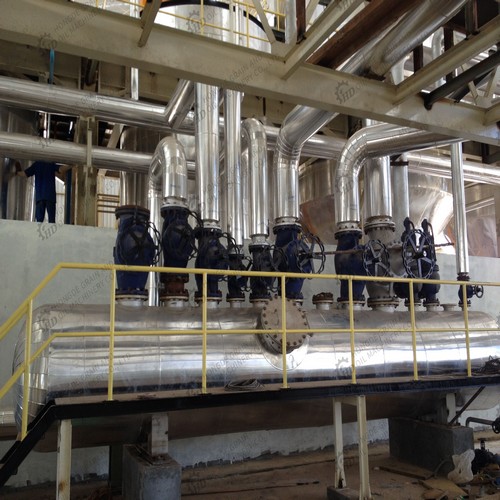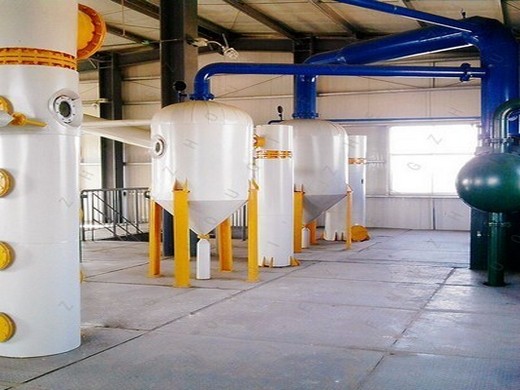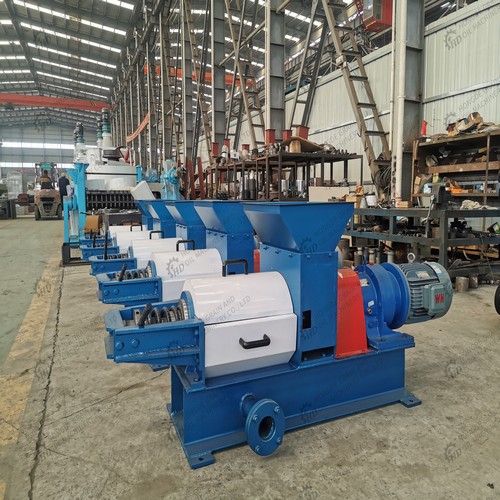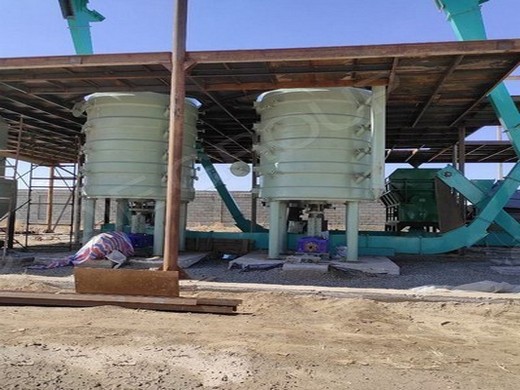Edible fats and oils processing : basic principles
- Usage:Seed oil expeller machine
- Type:Cold & Hot Pressing Machine
- Automatic Grade:Automatic
- Production Capacity:100%
- Voltage:380/220V
- Power(W):according to actual process capacity
- Dimension(L*W*H):according to actual process capacity
- Weight:according to actual process capacity
- Certification:CE
- After-sales Service Provided:Engineers available to service machinery overseas
- Bank credit rating:AAA
- certificate:ISO9001&CE
- Capacity:5t-3000t
- Function:press various kinds of oil seeds
- Raw material:oil seeds,Seeds
- Warranty:1 year
- Service life:20 years
- After sale service:design the workshop/ installation/ training workers
Edited revisions of papers from the World Conference on Edible Fats and Oils Processing--Basic Principles and Modern Practices held in Maastricht, the Netherlands, Oct. 1-7, 1989. Description: x, 442 pages : illustrations ; 29 cm: Responsibility: edited by David R. Erickson.
Edible Fats and Oils Processing: Basic Principles
- Usage:Edible Oil
- Type:Cold & Hot Pressing Machine
- Automatic Grade:Automatic
- Production Capacity:1-600T/h
- Voltage:220V,380V
- Power(W):according to customer
- Dimension(L*W*H):according to customer
- Weight:according to customer
- Certification:ISO&BV&CE
- After-sales Service Provided:Engineers available to service machinery overseas
- raw material:fresh fruit bunches
- final product:Edible oil
- certificate:ISO9001
- bank credit rating:AAA
- capacity:1-600T/h
- Color:according to customer
- texture:stainless steel and carbon steel
- warranty:1 year
- service life:40 years
- service after sale:design workshop | installation | training
Edible Fats and Oils Processing: Basic Principles and Modern ... cocoa butter color concentration containing corn germ oil cottonseed oil crude oil crystallization degumming deodorization distillate edible oils effect esters extractor fats and oils filter fish oil flakes flavor fractionation free fatty acids ... Basic Principles and Modern Practices ...
Edible Fats and Oils: Theory and Practice
- Usage:Seed oill Production
- Type:oill Mill
- Automatic Grade:Automatic, Automatic
- Production Capacity:200---300T/D
- Voltage:adjusted to the refining equipment
- Certification:ISO9001
- After-sales Service Provided:Engineers available to service machinery overseas
- Refining Grade:RBD Oil
- Refining Main Machine:Deodoriser,Clay Tank,etc
- Refining Process:Degumming,Deordorization,Decolorization,etc
- Steel:All equipment in Type 304 steel
The processing of edible fats and oils is a very vast arena of technological activities which the undergraduate students of the related fields learn in a shorter period of time.
Fat and oil processing | chemistry | Britannica
- certification:ISO-9001
- handling capacity:0.5t-30ton/day
- meterial:carbon steel and stainless steel
- warranty period:1 year
- delivery:a month after deposit
- color:according to customers' requirement
- type:physical refining
- raw material:crude Seed oil, crude Seed oil etc
Fat and oil processing, method by which animal and plant substances are prepared for eating by humans. More than 90 percent of the world production of fats and oils is used in edible products, and the objective of most processing steps is to convert crude fats of low palatability or undesirable ...
Edible fats and oils processing. Basic principles
- Usage:Seed oill Production
- Type:Cold & Hot Pressing Machine
- Automatic Grade:Automatic
- Production Capacity:100%
- Voltage:380V
- Power(W):according to capacity
- Dimension(L*W*H):according to capacity
- Weight:changed with the capacity
- Certification:CE and BV
- After-sales Service Provided:Engineers available to service machinery overseas
- Product:Seed oill Production
- Capacity:1-3000TPD
- Warranty:12 months
- Raw material:oil seed
- Material of equipment:stainless steel and carbon steel
- Manufacturing experience:over 40 years experience in edible oil field
- type:Seed oill Production
- including:machines,installation,tech consulting after sales
- Automatic:Automatic
- operate:easy and safe
Edible fats and oils processing. Basic principles and modern practices (World Conference Proceedings). Herausgegeben von D.R. Erickson. 442 Seiten, zahlr.

Membrane degumming of crude soybean and rapeseed
Koseoglu, S.S., K.C. Rhee, and E.W. Lusas, Membrane Processing of Crude Vegetable Oils: Laboratory Scale Membrane Degumming, Refining and Bleaching, in Proceedings of World Conference on Edible Fats and Oils Processing: Basic Principles and Modern Practices, American Oil Chemists’ Society, Champaign, 1990, pp. 182–188. Google Scholar
GET PRICE
Processing Edible Oils Penn State Extension
Oils used for salad dressing as well as those used for cooking uses such as deep fat frying and pan frying are all called edible oils. In a typical edible oil processing plant oil is extracted from the seed first using mechanical extraction (expeller press) followed by chemical extraction (hexane extraction).
GET PRICE
The Bleaching step mechanism AMC Adsorbents
When bleaching an-edible oil or fat with acid-activated clay, the acidic sites of the clay donate a proton to the pigment molecules and form a positively charged organic cation. The pigment molecule is held to the surface of the clay by electrostatic bonding.
GET PRICE
Codes of Practice CODEXALIMENTARIUS FAO-WHO
CXC 79-2024: Code of Practice for the Reduction of 3-Monochloropropane-1,2- Diol Esters (3-MCPDEs) and Glycidyl Esters (GEs) in Refined Oils and Food Products Made With Refined Oils
GET PRICE
winterize Wiktionary
To remove the saturated fats from (a vegetable oil) by cooling and filtering it, so that it does not go cloudy in the winter. 1990, David R. Erickson,(World Conference Proceedings) Edible Fats and Oils Processing: Basic Principles and Modern Practices, page 103:
GET PRICE
Chapter 5 : Processing and refining edible oils
Chapter 5 : Processing and refining edible oils. Contents Previous Next. Rural vegetable oil production Large-scale production Potential side reactions during high-temperature processing Physical losses Fat modification processes Other considerations Conclusions. Processing can remove the components of edible oils which may have negative effects on taste, stability, appearance or
GET PRICE
Hydrogenated vs Winterize What's the difference? WikiDiff
* 1990,David R. Erickson (editor), (World Conference Proceedings) Edible Fats and Oils Processing: Basic Principles and Modern Practices,page 103: Some oils which are frequently winterized to produce salad oil are: refined and lightly hydrogenated soybean oil, cottonseed oil and some varieties of rapeseed oil. The continuous miscella
GET PRICE
Butter v. Margarine Myths: Margarine Was Invented
8 Erickson, David R. Edible Fats and Oils Processing: Basic Principles and Modern Practices : World Conference Proceedings. Champaign, IL: American Oil Chemists’ Society, 1990. Margarine is One Molecule Away From Plastic. Okay, where was I? Mège had produced a semi-fluid pale yellow substance he called olemargarine.
GET PRICE
ACDSee ProPrint Job
Part I Principles 1. Principles of Food Processing, 3 Y. H. Hui, Miang-Hoog Lim, Wai-Kit Nip, J. Scott Smith, P. H. F. Yu 2. Food Dehydration, 31 Robert Driscoll 3. Fermented Product Manufacturing, 45 Wai-Kit Nip 4. Fundamentals and Industrial Applications of Microwave and Radio Frequency in Food Processing, 79 Yi-Chung Fu 5. Food Packaging, 101
GET PRICE
Canola Seed
Canola Seed Canola is one of the most important oilseed crops in the world. The oil from the seed has gained an excellent reputation for have studied waxes in canola oil. Deodorization In edible oil processing, deodorization is the final "refining" step. Its primary function is to remove compounds from the oil which impart odour and taste typical of the seed from which it is derived. In
GET PRICE
Edible fats and oils processing basic principles
Edible fats and oils processing basic principles and modern practices : world conference proceedings (Hardcover) David R Erickson; Edited by David Erickson
GET PRICE
A prospective study of intake of trans-fatty acids
A prospective study of intake of trans-fatty acids from ruminant fat, partially hydrogenated vegetable oils, and marine oils and mortality from CVD Volume 108 Issue 4 Ida Laake, Jan I. Pedersen, Randi Selmer, Bente Kirkhus, Anja S. Lindman, Aage Tverdal, Marit B. Veierød
GET PRICE
PILOT PLANT SERVICE FOR CHEMICAL INTERESTERIFICATION OF
Triacylglycerol composition and solid fat content of palm oil, sunflower oil and palm kernel olein blends before and after chemical interesterification. J. Amer. Oil Chem. Soc., 79(11):1137-1144. ROSENDAAL, A (1990). Interesterification of oils and fats. World Conference Proceedings, Edible Fats and Oils Processing: Basic Principles and Modern
GET PRICE
Vegtetable Oil Processing and Products of Vegetable
This short course is a must attend for anyone involved in the field of Vegetable Oil Processing and interested in the latest developments in bleaching, hydrogenation, interesterification, deodorization, production of biodiesel and non-trans fats.
GET PRICE
Refining process of fat and oil SlideShare
PHYSICAL REFINING The Physical Refining process is used for oils and fats with high FFA and contains three basic steps: Acid Conditioning or Enhanced Degumming Bleaching Stripping and Deodorizing The degumming process used depends on the oil or fat being refined. Methods of Refining CHEMICAL REFINING The Chemical Refining process is used for
GET PRICE
Standard Methods for the Analysis of Oils, Fats
The Commission on Oils, Fats, and Derivatives (1985—1990) [pages xv and xvij* Warning (revised) [page xvii]* Quality assurance (analytical quality control)—General principles [pages xviii_xixj** Precision data for the following methods published in the 7th Edition: Determination of acid value (acidity), of iodine value, and of peroxide value
GET PRICE
Moving beyond colour Alfa Laval
Moving beyond colour Alfa Laval bleaching processes for fats and oils. Bleaching is one of the key processes in fats and oils refining, designed to remove not only pigments, but also a wide range of other impurities. Most crude fats and oils contain impurities that have to be removed for both commercial and health reasons. Modern industrial bleaching technologies are the way to do this
GET PRICE
Handbook of Food Science, Technology, and Engineering
Advances in food science, technology, and engineering are occurring at such a rapid rate that obtaining current, detailed information is challenging at best. While almost everyone engaged in these disciplines has accumulated a vast variety of data over time, an organized, comprehensive resource cont
GET PRICE











